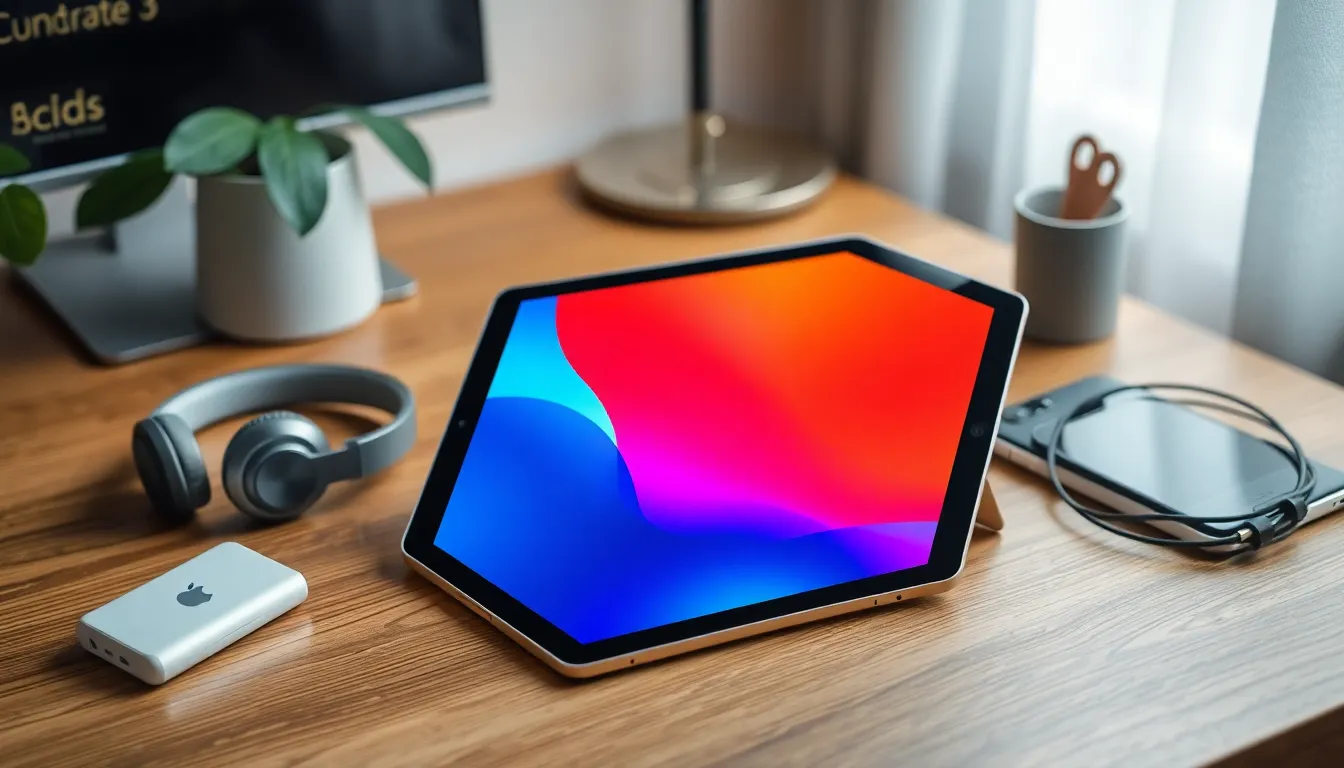In a world where tablets reign supreme, understanding the tech stack behind them is like knowing the secret recipe to your favorite dish. It’s not just about the sleek design or that irresistible touch screen; it’s about the powerful software and hardware working together like a well-rehearsed dance troupe. Ever wondered what makes your tablet tick?
Table of Contents
ToggleOverview Of Tablet Tech Stack
Tablet tech stack encompasses the combination of hardware and software that drives tablet functionality. Key components include the operating system, processors, memory, and display technologies. Each part plays a critical role in delivering a seamless user experience.
Operating systems vary across tablets, with options like Android, iOS, and Windows featuring unique functionalities. Android tablets offer customization options, while iOS provides ecosystem integration. Windows tablets excel in productivity due to application compatibility.
Processors influence a tablet’s speed and efficiency. Common choices are ARM-based chips like Qualcomm Snapdragon, which optimize battery life, and Apple’s A-series chips, known for high performance. Selecting a powerful processor enhances multitasking and gaming experiences.
Memory capacity affects app performance. Tablets typically range from 2 GB to 12 GB of RAM. Higher RAM facilitates smoother transitions between applications and reduces lag during intensive tasks. Storage options usually vary from 32 GB to 1 TB, with many tablets supporting expandable storage via microSD cards.
Display technologies impact visuals. Tablets often feature LCD or OLED screens, impacting color vibrancy and contrast ratios. Higher resolution displays improve clarity, making them ideal for media consumption and graphic design.
Battery life remains essential for portability. Average tablet batteries can last 8 to 12 hours, depending on usage and model specifications. Efficiency optimizes power consumption, allowing users to engage with devices without frequent recharges.
Understanding the tablet tech stack requires examining each component’s role in the overall functionality. Comprehensive knowledge of these elements aids in selecting the right tablet for individual needs.
Key Components Of Tablet Tech Stack

Understanding the key components of a tablet tech stack provides insights into its performance and functionality. The main elements include hardware specifications, operating systems, and application frameworks.
Hardware Specifications
Tablet hardware specifications define performance capabilities. Processors play a pivotal role; ARM-based chips deliver efficiency while Apple’s A-series chips enhance speed. Memory options range from 2 GB to 12 GB of RAM, directly affecting multitasking capabilities. Storage varies significantly, with options from 32 GB to 1 TB, and many tablets offer expandable storage solutions. Display technologies like LCD and OLED are crucial, as they influence visual clarity and color accuracy. Battery life often varies between 8 to 12 hours, essential for portability and user experience.
Operating Systems
Operating systems determine user interaction and app compatibility. Android provides extensive customization and flexibility, appealing to varied user preferences. In contrast, iOS emphasizes ecosystem integration, seamless connectivity with other Apple devices, and robust security features. Windows excels in productivity, catering to business users with desktop-like functionality on tablets. Each operating system contributes unique strengths, making the choice pivotal for tablet users.
Application Frameworks
Application frameworks enable software development tailored for tablets. Frameworks like Flutter and React Native facilitate cross-platform development, allowing apps to run on multiple operating systems. Native frameworks, such as Swift for iOS and Kotlin for Android, optimize performance by utilizing device features more effectively. User experience evolves with these frameworks, as they enhance app performance and responsiveness. Prioritizing the right frameworks directly impacts app quality and user satisfaction.
Popular Tablet Tech Stacks
Understanding different tablet tech stacks helps in comparing various systems. Each stack defines the user experience and capabilities across devices.
Android-Based Tablet Tech Stack
Android tablets utilize Google’s operating system. A wide range of processors powers these devices, from Qualcomm Snapdragon to MediaTek chips. RAM typically varies between 2 GB and 12 GB, enhancing multitasking capabilities. Storage options generally range from 32 GB to 1 TB, and many models support microSD expansion. Display technologies include LCD and AMOLED, providing vibrant visuals. Battery life often extends from 8 hours to over 12 hours, making these tablets suitable for long use.
iOS Tablet Tech Stack
Apple’s iOS powers its tablets, establishing a seamless ecosystem. The A-series processors deliver exceptional performance, capable of handling demanding applications. RAM usually sits around 4 GB to 6 GB, ensuring smooth operation for multitasking. Storage choices range from 64 GB up to 2 TB, with no expandable option. Retina displays offer breathtaking visual fidelity, enhancing user interaction. Battery life often spans 10 to 12 hours, supporting extensive usage without frequent recharging.
Windows Tablet Tech Stack
Windows tablets leverage the versatility of the Windows operating system. Intel and AMD processors are commonly used, ensuring robust performance suitable for both productivity and gaming. Memory sizes usually start at 4 GB and can reach 16 GB or higher, accommodating various applications. Storage options typically range from 64 GB to 1 TB, often with SSD technology for faster access. Display types vary, including LCD and IPS, delivering sharp details. Battery life often lasts between 8 to 10 hours, providing enough power for daily tasks.
Future Trends In Tablet Tech
Emerging trends in tablet technology showcase advancements in various components of the tech stack. Artificial intelligence (AI) integration is becoming increasingly prevalent, enhancing user experiences through smarter applications and personalized functionalities. Expected improvements in battery technology aim for longer life spans, allowing devices to function efficiently for extended periods.
Flexibility in design influences future tablet innovations. Companies are exploring foldable screens, making tablets more portable and versatile. Display technology is also evolving, with mini-LED and micro-LED displaying superior color accuracy and brightness. This enhances user interaction in various environments, whether indoors or outdoors.
Augmented reality (AR) and virtual reality (VR) applications are gaining traction. Developers are expanding the capabilities of tablets, enabling immersive experiences in gaming and education. This shift increases the demand for robust processing power and advanced graphics capabilities, leading to the development of more capable processors.
5G technology is becoming standard in new tablet models. Enhanced connectivity opens doors for faster data transfer and streaming options. Tablets equipped with 5G capabilities empower users to remain connected on the go.
Security features are also on the horizon. Innovations like facial recognition and biometric security measures enhance privacy. Manufacturers are prioritizing device protection as users demand secure environments for personal and professional data.
Sustainability becomes a critical focus for manufacturers. Eco-friendly materials and recyclable designs cater to increasing consumer awareness about environmental impact. As tablets continue to evolve, these trends will shape their functionality, comprehension, and environmental footprint, ensuring they remain relevant in the ever-changing tech landscape.
Tablet technology continues to evolve rapidly with advancements in hardware and software. Understanding the tech stack is crucial for making informed choices that align with specific needs. Each operating system offers distinct advantages that cater to various user preferences, while the choice of processors and memory can significantly enhance performance.
As trends like AI integration and improved battery life emerge, tablets are becoming more versatile and powerful. The shift towards eco-friendly designs also reflects a growing commitment to sustainability in tech. Staying informed about these developments will ensure that users can select the best tablet to meet their demands in an ever-changing landscape.





